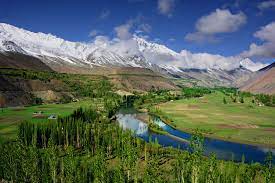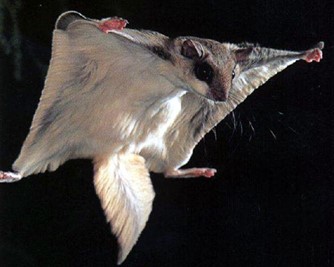Share now
Flora and Fauna; Khyber Pakhtunkhwa Province
KP supports rich biological diversity throughout the province. The richness of fauna can be gauged from the fact that 98 species of mammals, 456 species of birds and 48 species of reptiles are found in the province as compared to 188 species of mammals, 668 species of birds, and 177 species of reptiles found in all of Pakistan.
The province has a unique status throughout the country with regard to the diversity of wildlife habitats and species. Some of the distinctive features of the wildlife of KP are that
- the province supports the world’s largest surviving population of Kashmir markhor
- the province supports the world’s largest surviving population of Western Tragopan Pheasant
- KP is the only province with 5 out of the 6 species of pheasants found in all of Pakistan, including the Western Tragopan, monal, koklass, cheer, and kalij
- KP is the only province which supports 4 sub-species of markhor of the 5 found in Pakistan, including the Kashmir, Kabul, Astor, and Suleiman species
- this province supports all the sub-species of urial found in Pakistan, including Punjab, Laddakh, and Afghan urial
- 2 species of bear¾brown and black¾are found in the province
- 8 species of wild cat including 2 large cats, snow leopard and common leopard, are found in the province
- 4 species of partridges¾grey, black, see-see, and chakor¾are found throughout the province
- Palas Valley of Kohistan district in KP is internationally recognized as the hot spot of biodiversity
- KP supports critical staging grounds on the Indus Flyway for migratory water birds, falcons, bustards, sand grouses, and other bird species, besides providing breeding grounds for many altitudinal migrant bird species
- KP supports quite a few representative pockets of what are globally classified as Endemic Birds Area (EBA) by Birdlife International[1]
Flora of Khyber Pakhtunkhwa province
As stated already, KP province is spread over a large area, and consists of mountains, valleys, and piedmont plains. The flora of the mountains differs considerably from that of the plains and valleys. The following types of forests are found in the province:
- The coniferous forests occur at an altitude of 1,000 to 4,000 m above mean sea level. Chitral, Swat, Upper Dir, Lower Dir, Malakand, Mansehra and Abbottabad districts of KP and Azad Kashmir, and Islamabad districts of Punjab are the main areas covered with coniferous forests. Silver fir (Abies alba), spruce (Picea smithiana), deodar (Cedrus deodara), blue pine (Pinus wallichiana), and chir pine (Pinus roxburghii) are the most common varieties
- Subtropical broad-leaved evergreen forests are located in the Mansehra, Abbottabad, Mardan, Peshawar, and Kohat districts of KP. These forests are found on the hills, up to a height of 1,000 m. Dominant tree species are phulai (Acacia modesta), kau (Olea cuspidata) and hopbush (Dodonaea viscosa)
The important flora of the province includes deodar/ diar (Cedrus deodara), fir/partal (Abies pindrow), blue pine or kail (Pinus wallichiana), chir pine (Pinus roxburghii), elm or kaeen (Ulmus wallichiana), walnut or akhrot (Juglans regia) oak or bunj (Ouercus incana), yew or battangi (Taxus baccata), birch or betula (Betula utilis), chilghoza pine (Pinus gerardiana), spruce or kachal (Picea smithiana), poplar or pulch (Populas ciliata), monotheca or gurgura (Monotheca buxifolia), vibunum or guch (Vibernum nervosum), burberis or sumbal (Berberis lycium), pistachios or khanjak (Pistacia mutica), acacia or palosa (Acacia modesta), sanatha or zarawanai (Dodonea viscose), bhaiker or arosa (Adhatoda vasica), ber or karkana (Zizyphus mauritiana), babul or kikar (Acacia nilotica), olive or zaitoon (Olea furrigenea), frash or gaz (Tamarix aphylla), prosopis or jand (Prosopis spicigera), and date palm (Phoenix sylvestris).
The province is home to a large number of medicinal plants, some of which include milkweed (Calotropis procera), karir (Capparis deciduas), kaber (Capparis spinosa), barri or bata (Periploca aphylla), vena (Rhazya stricta), sormal poaceae (Saccharum griffithii), dunal (Withania coagulans), jharr ber (Zizyphus nummularia,), ger beta (Arabis nova), baker beta (Asparagus capitatus), beta (Blumea lacera), tor soba (Chenopodium murale), barawa (Cynodon dactylon), aspalaghzia (Fagonia cretica), tatesi gul (Gnaphalium luteo-album), zirgul (Inula grantioides Boiss), shen beta (Kickxia incana), tanoba (Kochia prostrate), warhora (Lactuca auriculata), bathal or tariza (Launea procumbens) bur clover (Medicago polymorpha), sponda or Syrian rue (Peganum harmala), isphaghol (Plantago psyllium), kandiari (Solanum surratens), needle grass or her beta (Stipa capensis Thunb), kalpora or ger beta (Teucrium stocksianum), kakronda (Blumea lacera), tor soba (Chenopodium murale), Bermuda grass or pers (Cynodon dactylon Linn.), aspalagzia or virgin’s mantle (Fagonia cretica Linn.), a type of weed called tetesi gul (Gnaphalium luteo-album Linn.), mangoli (Hertia intermedia Boiss.), zir gul (Inula grantioides Boiss.), split leaf lettuce or warhora (Lactuca auriculata Wall.), batthat or tariza (Launea procumbens Roxb.), bur clover or karushka (Medicago polymorpha Linn.), hermal or sponda (Peganum harmala Linn.), anmamoli or kundiari (Solanum surratens Burm.), Mediterranean needle grass (Stipa capensis Thunb.), and kastori (Teucrium stocksianum Boiss.).
Some of the medicinal plants of KP are exported. Export oriented plants include dakwar guchhi (morchella elata fr.), and sumbal/parsiaushah (adiantum capillus-veneris).
Fauna; Khyber Pakhtunkhwa province
KP province is home to a large variety of fauna. It has 94 species of mammals, 453 species of birds, and 42 species of reptiles.[2] The Himalayan moist and semi-moist temperate forests of the province are the richest habitats for mammals; these support the Himalayan black bear, Asiatic leopard, mush deer, snow leopard, hare, fox, jackal, urial, chinkara deer, ibex, wolf, goral, Himalayan palm civet, Kashmir hill fox, red flying squirrel, masked civet, mountain weasel, Marco Polo sheep, and Rhesus macaque.
The plains and valleys of the province are home to the common leopard, lynx, wolf, hog deer, grey goral, barking deer, brown bear, Asiatic jackal, monkey, yellow-throated marten, striped hyena, and wild boar.
The birds of the province include the Eurasian eagle owl, various kinds of pheasants, black and grey partridges, chakor, see-see partridge, Himalayan snow cock, snow partridge, common crane, demoiselle crane, houbara bustard, falcons, and various water fowls.
Reptiles include various types of snakes, kraits, frogs, and lizards; scorpions and spiders are also very common. A large variety of butterflies are also present, some of which are exported.
Figure 1.19 Snow-covered Forests, Kaghan Valley

Figure 1.20 Chitral Gol National Park

Figure 1.21 Markhor in Chitral Gol National Park

Figure 1.22 Flying Squirrel
[1] Wildlife Department Khyber Pakhtunkhwa official website; retrieved on February 23, 2013
[2] NWFP (now KP) Provincial profile 1998; by GoNWFP (now Khyber Pakhtunkhwa)
Khyber Pakhtunkhwa Districts
- Peshawar District Profile
- Abbottabad District Profile
- Bannu District Profile
- Battagram District Profile
- Buner District Profile
- Charsadda District Profile
- Chitral District Profile
- Dera Ismail Khan District Profile
- Lower Dir District Profile
- Upper Dir District Profile
- Hangu District Profile
- Haripur District Profile
- Karak District Profile
- Kohat District Profile
- Kohistan District Profile
- Lakki Marwat District Profile
- Malakand District Profile
- Mansehra District Profile
- Mardan District Profile
- Nowshera District Profile
- Shangla District Profile
- Swabi District Profile
- Swat District Profile
- Tank District Profile
- Torghar District Profile
- Bajaur Tribal Distyrict Ptofile
- Khyber Tribal District Profile
- Kurram Tribal District
- Mohmand Tribal District Profile
- North Waziristan Tribal District Profile
- Orakzai Tribal District Profile
- South Waziristan Tribal District Profile
Also visit: Sindh, Punjab, Baluchistan
